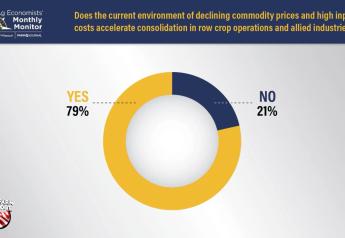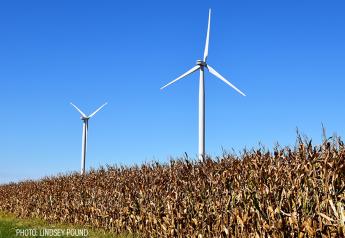Tips For Sprayers and Floaters Before A Busy Season

With spring application season about to kick off, there's no time like the present to review the fundamentals and learn new ideas for sprayer and floater maintenance.
The first step is inspecting the machines for needed repairs.
"Pre-season inspections are needed, even if the crew serviced the machine before they put it away for winter," says Paul Haefner, product specialist with AGCO application equipment.
He reports the item most commonly overlooked on yearly or seasonal inspections is the carbon filter for the cab. Specifically for application trucks, Haefner suggests checking the air brakes this time of year.
"Our shop is busy through the winter," says Tony Kornder, an applicator with Genesis Grower Solutions in Le Sueur, Minn. "Every piece of rolling stock we have gets gone through: spreaders, floaters and sprayers."
He says they wash all of the machines so small flaws-oil leaks or rubbing hoses-can't hide. Once a crew member has gone over a machine, another will give it a once over-as a fresh set of eyes.
Then, the crew takes into consideration the notes from the field.
"Each operator makes a list for the machine they run," Kornder says. "Most of the time, if something is wrong, we take care of it. But at the end of year, there may be notes like there's a hitch on the right side of the boom as it folds out."
The key to inspections are the details, even with the fundamentals. For example, on a floater, if one tire's pressure is off 10 PSI, when doing a GPS steering calibration, the resulting AB line will not be straight.
Outsmart Murphy. On all machines, the lighting systems, chassis, engine, transmission and application systems and components need inspection. Detailed inspections result in thorough repairs, which can help crews avoid Murphy's law.
"Part of the process is trying to look into the crystal ball and predict what could be an issue in the upcoming season," Kornder says. "On floaters, we closely look at delivery chains because you know that if they fail, it'll be when the box is full of product. So let's address anything causing concern in the shop."
Go Time. This past spring, the application team at Genesis Grower Solutions (who run eight machines across five retail locations) were in the field for 28 days straight.
"For everyone's benefit, we do applicator training twice a year. One is right before post-harvest applications. And another is in the spring." Kornder says. "We've added new machines, new application top dressing urea and new technologies with wireless map transfer and paperless reporting. Some of it covers new material, some is a refresher for our guys, and other parts of the training are to help reinforce best practices."
Kornder, who was named AGCO's 2016 Operator of the Year, encourages his peers across the country to know that mistakes happen, and things break. The only thing in their control is how they act as a team.
"We all know what's coming with application season-long days and a lot of work," Kornder says. "Take care of yourself now and in season."







